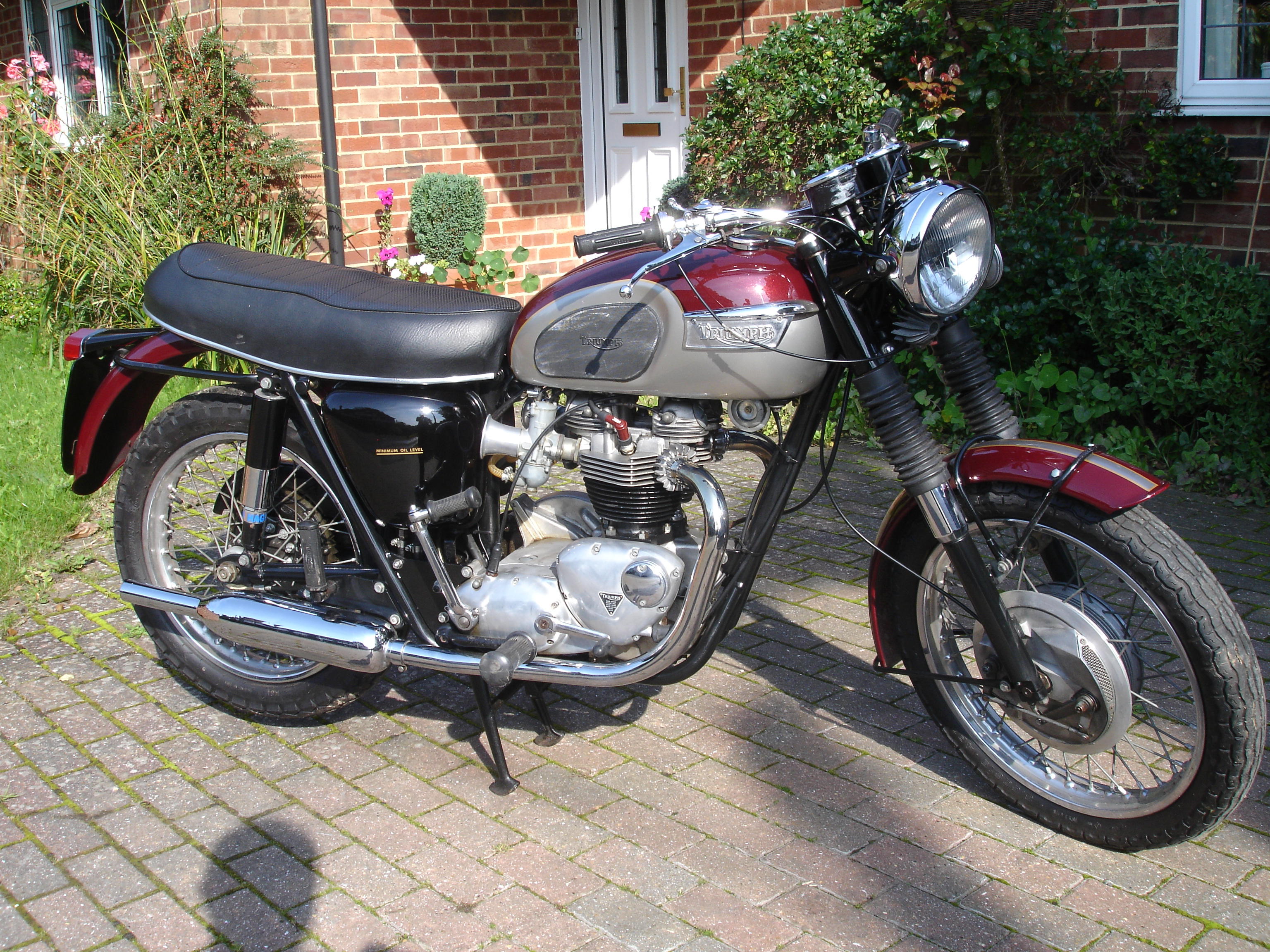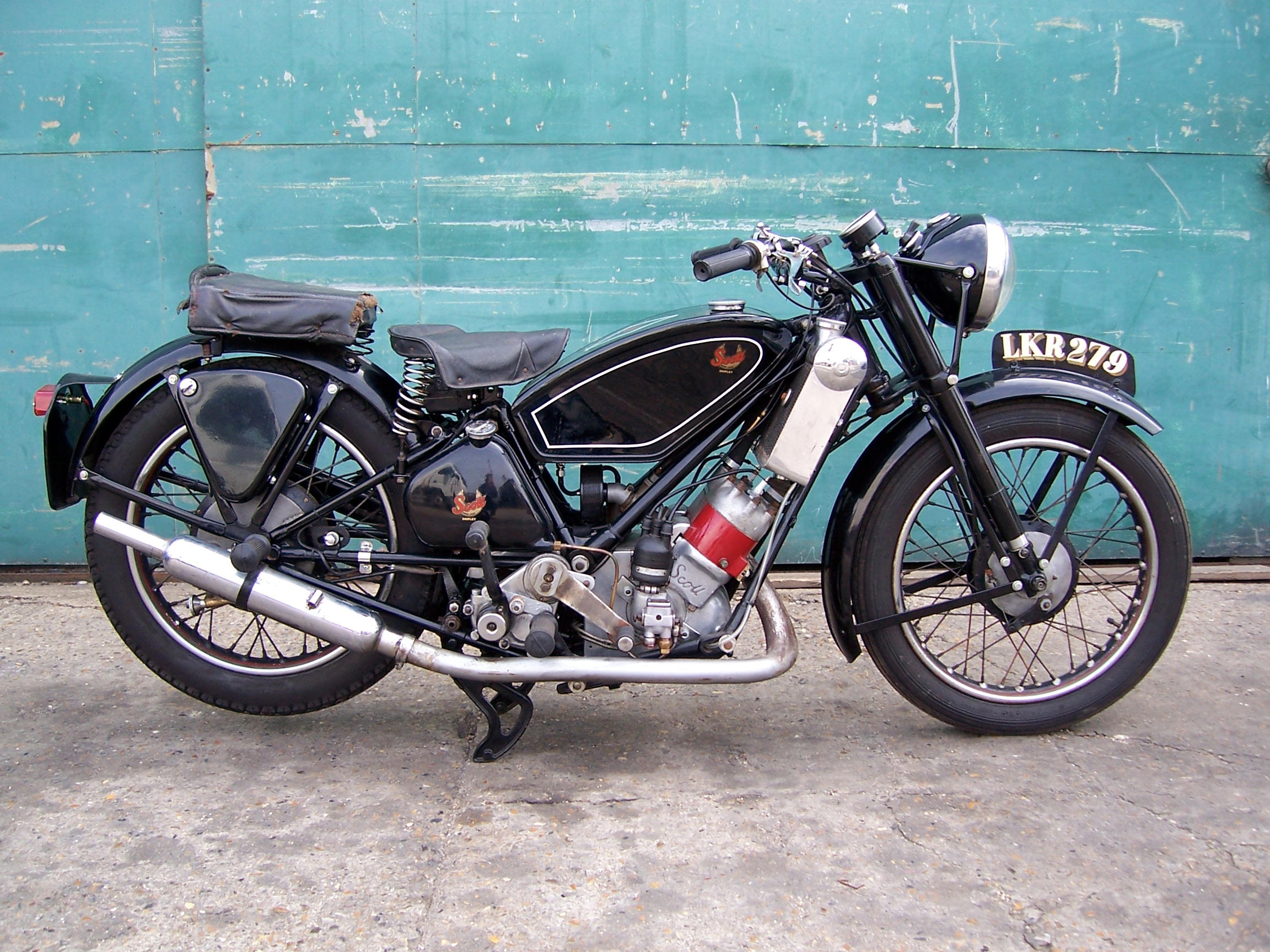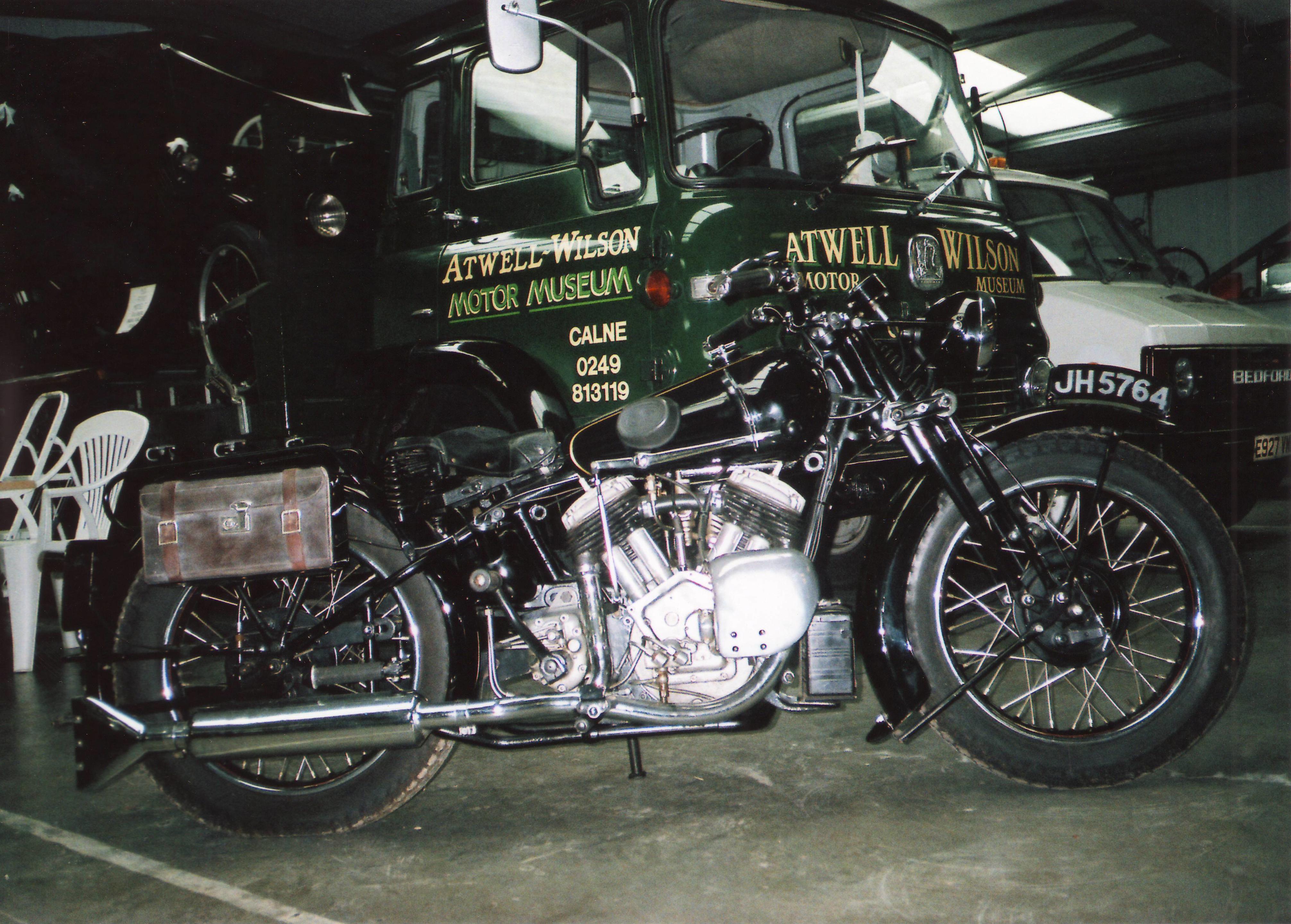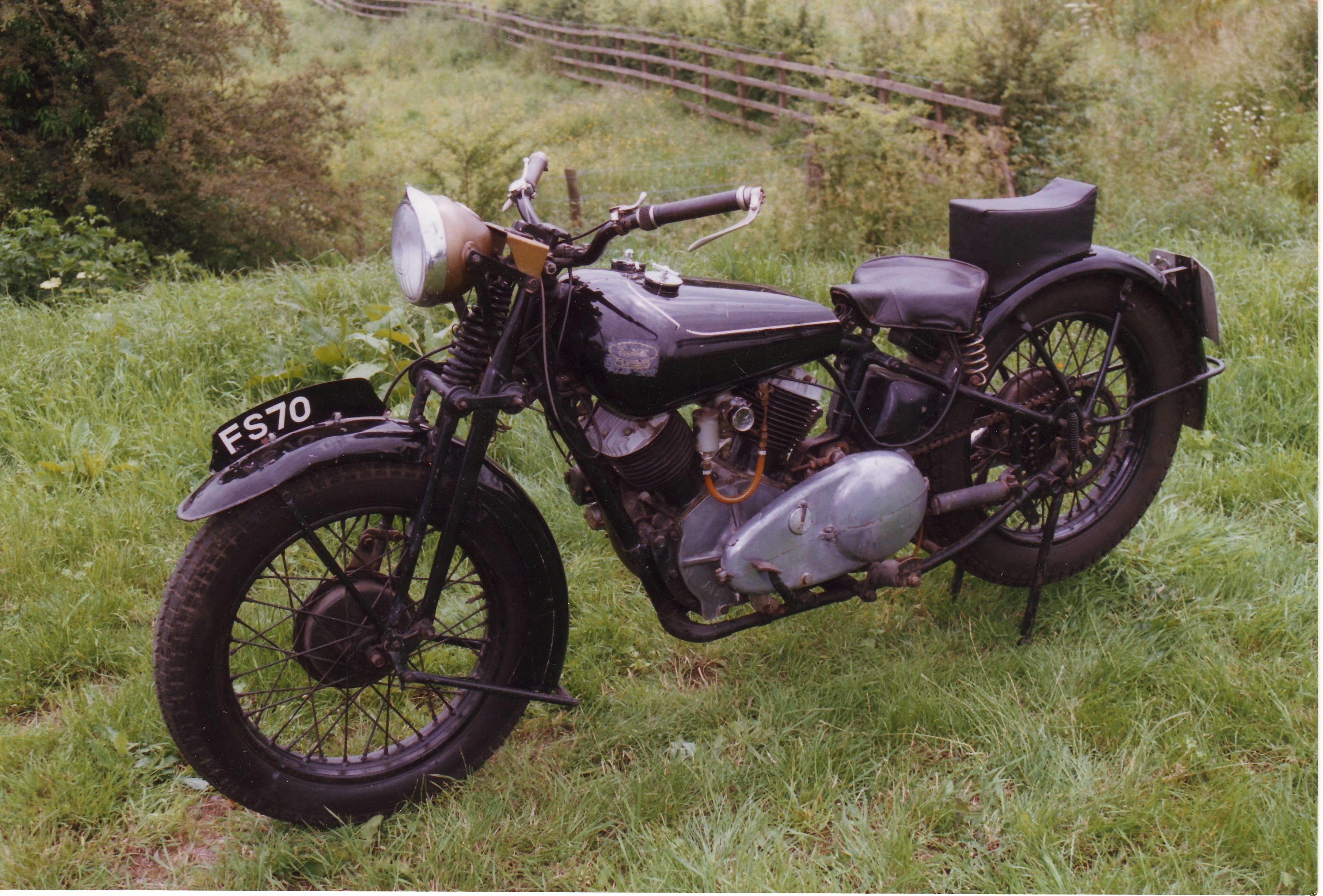Following a glorious era throughout the 1920s period very few British motorcycles were mechanically capable of contesting the rarefied world of Record Breaking. Since WWII the most frequent choice of machine for the Blue Riband of Motorcycling has been Vincent’s 1000cc Black Lightning. Vincent is undoubtedly revered as Britain’s most cherished medium-volume manufacturer but, having begun in 1928, and started manufacture at Stevenage (Herts), regularly producing several hundred machines each year, it was to universal disappointment the firm ceased trading in 1955. However, when arguably at their peak during the late 1940s, the American rider Rollie Free – formidable former Indian racer, and renowned for his hatred of Harleys – gained the World Speed Record at Bonneville Salt Flats, Utah, USA, for Un-Streamlined Machines on Fuel. This was achieved in September 1947 on a much-modified version of the 50-degree ohv vee twin. The Vincent was owned by John Edgar and, by arrangement, had been especially prepared at the factory. Famously, those last few mph of the Record attempt had proven elusive until Free stripped down to his bathing trunks, whereupon, he thundered through the traps at the magic two-way average speed of 150.31 mph. This important Record saw Vincent’s contemporary advertising proclaim they made the World’s Fastest Standard Motorcycle. And, very soon there after, the firm were prompted to introduce the Black Lightning model, incorporating a similar engine specification to that of the Edgar/Free prototype. Priced in excess of £400 it was easily Britain’s most expensive motorcycle. Is it any surprise, perhaps, but barely 30 examples were ever produced and sold. Today, a Black Lightning is categorically acclaimed as the Holy Grail of post war motorcycles. By its very nature Record Breaking is traditionally the most demanding of arenas. The roll call of contestants with a realistic chance of success has never extended beyond the resourceful few. However in 1949 The Motor Cycle, Britain’s leading 2-wheel publication, offered a Trophy, plus a generous £500 prize [more than the price of a new ’Lightning] for the first successful all-British attempt on the absolute World Speed Record, for which full streamlining was clearly a necessary requirement. The Record had been held since 1937 by BMW at 173.54 mph. Inspired by the Blue Un’s offer Reg Dearden, a popular high profile m/c dealer at Chorlton-cum-Hardy [Manchester], purchased a Black Lightning direct from the factory, expressly for the purpose. There was a widely held belief in those days that the guarantee for reaching these targeted speeds was most easily achieved by the fitment of a supercharger. In early 1950, therefore, Reg returned the bike to Stevenage for the retro fitting of a purpose-built Shorrocks ’charger, together with the necessary but complex “plumbing” system, which was fed via an outsize S.U. carburettor and float chamber. Other mandatory tasks included an extension of the gearbox and engine main shafts, the making of a special clutch contained by specially cast alloy casings, fabrication of a dramatically re-shaped ex Grey Flash fuel tank and, in order to correctly install the supercharger within the chassis, the main frame, engine plates, and swinging arm were strengthened-and-lengthened” by about 6 inches. The work was undertaken under the personal supervision of Phil Vincent, MD, with advice and assistance from George Brown and various other luminaries constantly involved at the Stevenage factory. Press reports of the time quote Dearden’s subsequent claims to the effect that every individual part on the bike was virtually now “one-off”, simultaneously admitting in a rueful mode how the work had cost him several thousand pounds! The work in fact proved such a massive undertaking that it took the factory until mid-July to complete. Public appearances of the Vincent, thereafter, were infrequent, inasmuch the next reported sighting of the now supercharged
Following a glorious era throughout the 1920s period very few British motorcycles were mechanically capable of contesting the rarefied world of Record Breaking. Since WWII the most frequent choice of machine for the Blue Riband of Motorcycling has been Vincent’s 1000cc Black Lightning. Vincent is undoubtedly revered as Britain’s most cherished medium-volume manufacturer but, having begun in 1928, and started manufacture at Stevenage (Herts), regularly producing several hundred machines each year, it was to universal disappointment the firm ceased trading in 1955. However, when arguably at their peak during the late 1940s, the American rider Rollie Free – formidable former Indian racer, and renowned for his hatred of Harleys – gained the World Speed Record at Bonneville Salt Flats, Utah, USA, for Un-Streamlined Machines on Fuel. This was achieved in September 1947 on a much-modified version of the 50-degree ohv vee twin. The Vincent was owned by John Edgar and, by arrangement, had been especially prepared at the factory. Famously, those last few mph of the Record attempt had proven elusive until Free stripped down to his bathing trunks, whereupon, he thundered through the traps at the magic two-way average speed of 150.31 mph. This important Record saw Vincent’s contemporary advertising proclaim they made the World’s Fastest Standard Motorcycle. And, very soon there after, the firm were prompted to introduce the Black Lightning model, incorporating a similar engine specification to that of the Edgar/Free prototype. Priced in excess of £400 it was easily Britain’s most expensive motorcycle. Is it any surprise, perhaps, but barely 30 examples were ever produced and sold. Today, a Black Lightning is categorically acclaimed as the Holy Grail of post war motorcycles. By its very nature Record Breaking is traditionally the most demanding of arenas. The roll call of contestants with a realistic chance of success has never extended beyond the resourceful few. However in 1949 The Motor Cycle, Britain’s leading 2-wheel publication, offered a Trophy, plus a generous £500 prize [more than the price of a new ’Lightning] for the first successful all-British attempt on the absolute World Speed Record, for which full streamlining was clearly a necessary requirement. The Record had been held since 1937 by BMW at 173.54 mph. Inspired by the Blue Un’s offer Reg Dearden, a popular high profile m/c dealer at Chorlton-cum-Hardy [Manchester], purchased a Black Lightning direct from the factory, expressly for the purpose. There was a widely held belief in those days that the guarantee for reaching these targeted speeds was most easily achieved by the fitment of a supercharger. In early 1950, therefore, Reg returned the bike to Stevenage for the retro fitting of a purpose-built Shorrocks ’charger, together with the necessary but complex “plumbing” system, which was fed via an outsize S.U. carburettor and float chamber. Other mandatory tasks included an extension of the gearbox and engine main shafts, the making of a special clutch contained by specially cast alloy casings, fabrication of a dramatically re-shaped ex Grey Flash fuel tank and, in order to correctly install the supercharger within the chassis, the main frame, engine plates, and swinging arm were strengthened-and-lengthened” by about 6 inches. The work was undertaken under the personal supervision of Phil Vincent, MD, with advice and assistance from George Brown and various other luminaries constantly involved at the Stevenage factory. Press reports of the time quote Dearden’s subsequent claims to the effect that every individual part on the bike was virtually now “one-off”, simultaneously admitting in a rueful mode how the work had cost him several thousand pounds! The work in fact proved such a massive undertaking that it took the factory until mid-July to complete. Public appearances of the Vincent, thereafter, were infrequent, inasmuch the next reported sighting of the now supercharged















Testen Sie LotSearch und seine Premium-Features 7 Tage - ohne Kosten!
Lassen Sie sich automatisch über neue Objekte in kommenden Auktionen benachrichtigen.
Suchauftrag anlegen